How to Lose Body Fat and Preserve Muscle Mass
How to Lose Body Fat and Preserve Muscle Mass
Tips to Become Leaner and Maintain Muscle Mass
If your goal is to become leaner, figuring out the special component for saving muscle while losing fat can feel overwhelming. Even though it’s not always easy, it’s possible to lose fat and gain muscle at the same time. It just takes a lot of patience and a clear plan.
Understanding weight loss vs. fat loss
The first thing you must understand is weight loss versus fat loss. Your total body weight is comprised of lean body mass and fat mass. Your lean body mass is made up of muscle mass, water mass, bone mass, organs, and tissues. Consequently, you could be losing fat or lean body mass if you are losing weight.
What gets confusing is that losing body fat while gaining muscle requires somewhat conflicting approaches. The traditional path for losing body fat is caloric deficit via nutrition and exercise. Gaining muscle typically involves a caloric surplus. Because fat and muscle are closely linked, it is difficult to prioritize losing one without impacting the other. So, what is the takeaway? Fat loss is not the same as weight loss. You need a very targeted approach if you want to keep or gain muscle while losing fat.

Annapolis Rock & Baltimore Waterfront Promenade

How to Lose Fat while Maintaining and Building Muscle
Maintaining and building muscle while losing fat requires much of the same as just losing fat: a balanced diet and regular exercise is vital. Some tips to keep in mind are food is not your enemy, mix up your workouts, and don’t forget to give yourself a break.
A calorie deficit doesn’t mean eating as little as possible. If you are going on little to no calories, your body will end up taking energy from your muscles which will result in loss of muscle mass. It is recommended to have three balanced meals that include protein, vegetables, and healthy fats as well as two snacks comprised of protein and fiber.
Over the years, most people have been brainwashed that in order to change your body composition, doing endless cardio is the answer. Wrong. To burn fat and not lose muscle requires both aerobic training and cardiovascular training. Don’t be shy to lift heavy.
Rest is just as essential as exercising regularly. Pushing yourself too hard and overtraining can cause muscle protein breakdown, the exact opposite of what you want. You want to make sure you are getting enough sleep and working on decreasing your stress levels. If you are over stressed and not sleeping enough, your body will hold onto your fat stores.
Workouts that Prioritize Fat Loss AND Muscle Gain
Aerobic exercise is key for losing fat, but don’t think your only option is high intensity. Low impact and low intensity workouts can be equally beneficial such as long walks, jogging, running, biking, dancing, swimming, rowing, and jump rope. The aerobic activity you perform doesn’t have to be hard, but it needs to be sustained – doing about 45 to 60 minutes.
While cardio is necessary for burning fat, strength training is necessary for building and maintaining muscle, AND for burning fat. A well-defined, progressive, and challenging resistance training program is one of the most valuable tools for fat loss and body recomposition. Lifting hard and heavy not only burns a decent number of calories, but it also actually builds muscle tissue as opposed to cardio.
You want to consistently switch things up rather than fall into a pattern when getting into a strength training routine. The possibility of so many variables is what helps you challenge your body and progress. Some of the variables you can change are reps, sets, weight, tempo, range of motion, rest, angles, and machines versus free weights. Always remember targeted fat loss doesn’t work so don’t just focus on one part of your body.
Throw away your 3-pound dumbbells. Lifting heavy is major as increasing the weight better stimulates the muscle growth needed to improve body composition. If you are new to weightlifting, it is recommended to start out by performing full-body workouts three times per week and follow progressive overload, a core training principle. Progressive overload is simply the incremental rise of stress put on the body when training. Muscle growth comes from forcing the body to adapt to new and more challenging stressors in training. If you do not continuously challenge the body and give it fresh stimuli to adapt to, then it will never grow or improve.
The best bang-for-your-buck to recruit more muscle mass in training and burn more calories is to perform compound exercises. Compound exercises include moves like squats, deadlifts, pull-ups, and bench press. These types of exercises stimulate the greatest release of human growth hormones which help to preserve lean muscle mass. They are also ideal for anyone in a rush considering they work so much of your body in a short amount of time. If fat loss is your goal, prioritize these moves over isolation exercises like leg extensions and bicep curls.
Healthy Eating Tips
Diets are trash. Paleo, Keto, Low-carb, Atkins, The Zone, Weight Watchers, Jenny Craig, Nutrisystem. Get them out of your head. The most important thing is to consume all nutrients – protein, fats, and carbohydrates. A balanced “diet” that consists of three meals and two snacks is key. Keep in mind that you do have to be in a calorie deficit to lose fat. In other words, you need to be burning more energy than you consume in a day. The best way to do this is to eat a little bit less and move a whole lot more.
Going heavy on protein is necessary for preserving muscle tissue. It helps to repair, rebuild, and maintain muscle tissue, which not only improves body composition, but also increases your metabolic rate. Protein-rich foods will keep you full and satiated for a longer amount of time.
Repeat this repeatedly: Carbs are my best friend. You’ll get plenty of benefits by choosing non-refined carbs. They can boost performance and strength, assist in the recovery from your workouts, improve thyroid function, and help you sleep better. It is recommended to eat carbs before and after a workout, when your body is most likely to use the glucose properly and refuel your muscles.
One of the healthiest ways to meet your vitamin and mineral needs is to eat vegetables. They also suppress inflammation and aid in healthy digestion. They are low in energy density but big in physical volume so you can eat plenty of them to fill you up without the calorie count getting too high. Fat is a great source of energy that can slow down digestion and suppress hunger between meals. Just monitor your intake and make the right choices such as nuts, seeds, olive oil, and avocados.
Lastly, drinking enough water is vital not just for losing fat and maintaining muscle, but also for just being healthy overall. It carries the nutrients we need to the cells and the cellular debris back from the tissues to the kidney, liver, or back to the intestines to be transported out of the body. Staying hydrated impacts metabolism, performance, and basically every body function.
Healthy Eating Tips
Diets are trash. Paleo, Keto, Low-carb, Atkins, The Zone, Weight Watchers, Jenny Craig, Nutrisystem. Get them out of your head. The most important thing is to consume all nutrients – protein, fats, and carbohydrates. A balanced “diet” that consists of three meals and two snacks is key. Keep in mind that you do have to be in a calorie deficit to lose fat. In other words, you need to be burning more energy than you consume in a day. The best way to do this is to eat a little bit less and move a whole lot more.
Going heavy on protein is necessary for preserving muscle tissue. It helps to repair, rebuild, and maintain muscle tissue, which not only improves body composition, but also increases your metabolic rate. Protein-rich foods will keep you full and satiated for a longer amount of time.
Repeat this repeatedly: Carbs are my best friend. You’ll get plenty of benefits by choosing non-refined carbs. They can boost performance and strength, assist in the recovery from your workouts, improve thyroid function, and help you sleep better. It is recommended to eat carbs before and after a workout, when your body is most likely to use the glucose properly and refuel your muscles.
One of the healthiest ways to meet your vitamin and mineral needs is to eat vegetables. They also suppress inflammation and aid in healthy digestion. They are low in energy density but big in physical volume so you can eat plenty of them to fill you up without the calorie count getting too high. Fat is a great source of energy that can slow down digestion and suppress hunger between meals. Just monitor your intake and make the right choices such as nuts, seeds, olive oil, and avocados.
Lastly, drinking enough water is vital not just for losing fat and maintaining muscle, but also for just being healthy overall. It carries the nutrients we need to the cells and the cellular debris back from the tissues to the kidney, liver, or back to the intestines to be transported out of the body. Staying hydrated impacts metabolism, performance, and basically every body function.
Banking with FitnessBank
Looking for quality banking services in the D.C. area? FitnessBank offers top value to our customers via a number of beneficial programs. Check out our home page for perks of opening an account.

